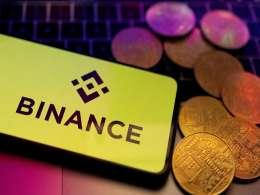The Indian government has finally come out with a 3G policy for telecom sector, which could mean big bucks for the exchequer, mega inflow from foreign players (including many new firms) besides high speed internet enabled and valued added services (VAS) straddling enhanced voice, video, data and downloading facilities on their mobile phones for the consumer. One of the biggest positive impact outside its immediate stakeholders would turn out in the form of more exciting times for venture capital and private equity backed telecom VAS firms.
The Policy In Brief
The policy (the full text in PDF) calls for an auction for spectrum with different reserve price fixed for separate telecom circles. As against the demand of certain lobby groups, the government has opened the market for local as well as foreign players, as long as they meet certain criteria — holding a unified access service (UAS) license or being eligible to hold UAS license. The foreign players who will be eligible to hold a UAS license will have to form JVs with local partner and can hold a maximum of 74 per cent in the JV as per the existing FDI norms in the telecom sector. However, in addition to the auction price, they will have to pay UAS license fee.
The spectrum will be auctioned in blocks of 2×5 MHz in 2.1 GHz band. There can be a maximum of 10 players in any circle and in most cases the number will vary between 5-10 players. The license will hold for 20 years and besides 3G license fee firms will have to pay spectrum usage charge. However, in the first year, the firms will not have to pay this spectrum charge which will amount to 1 per cent of annual gross revenue from the second year onwards.
The reserve price for the auction of spectrum in Delhi, Mumbai and other Circle A categories has been fixed at Rs 160 crore. Kolkata and Circle B areas will have a reserve price of Rs 80 crore and Circle C will have a floor price of Rs 30 crore. A pan India license will have a reserve price of Rs 2,020 crore.
The government is looking to garner as much as $10 billion from the auctions. While this may be small money for India (the second fastest growing emerging market in the world and also the second largest wireless market after China) compared to 3G auctions worth $34 billion in UK eight years back, one needs to factor in the disaster that the high prices caused in the British market as telecom operators struggled to generate returns.
If the number of bids is less than or equal to the number of spectrum blocks in a particular circle, spectrum will be allocated to all the bidders at the highest bid price. If the number of bids are more, then the e-auction rules will be applicable. The government will appoint an external agency for the auctions.
The PSU operators — MTNL and BSNL — will get a preferential treatment. They will be allocated one block in the circles in which they are operating. They need not participate in the auction but will have to shell out an amount equal to the highest bid price for that area.
At the time of allocation of the spectrum blocks will be given to bidders according to their bids. In case of a tie those having an existing operation in a circle will get a preference and in case of another tie on that criteria, those having more subscribers in that circle will get the preference.
The government has also put a mandatory rollout plan for 3G services to dissuade hoarding of spectrum. The licensee has to rollout services in 90 per cent of metro areas within five years and for other circles the license holders have to cover 50 per cent of the area which would have to include 15 per cent rural areas. There are also penalties for not meeting the rollout obligations.
What It Means
Big bang launch of 3G services in India by 2009. More players, more competition, big orders for network equipment makers and an indirect entry of new telecom players in voice based services.
There is already some inbuilt preference for CDMA players — Reliance Communications in particular. While CDMA and GSM operators can bid in the auctions, CDMA players will also have the option to get spectrum in a different band — 800 MHz, in a price which would be proportional to the highest auction price in the circle.
While there are four CDMA operators– BSNL, Rcom, Tata and Shyam, it is likely that BSNL and Reliance will get a license in most circles barring few where Tatas are bigger than Reliance as BSNL will anyways get a 3G license through the preferential route. PSU players also get a headstart in starting operations and could potentially start their 3G services within the next 4-6 months.
One segment of industry which will particularly see a major boost is the mobile VAS firms. Currently a big share of the pie is taken out by the telecom operators who take out more than two thirds of the revenue generated from providing the VAS services. The VAS sector has attracted a lot of money from VC firms over the past 2-3 years and could see revenues shooting up with the start of 3G services.
On the one hand it would allow more valued added services as against the existing scenario when the telecom operators only offer low end services due to lack of spectrum, it could mean two things for VAS firms: They could either see a high volume low margin business to continue as at present but a more likely scenario is where they negotiate and strike a better revenue sharing arrangement with operators.





